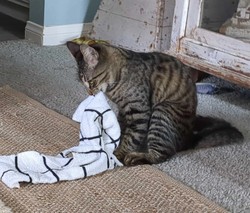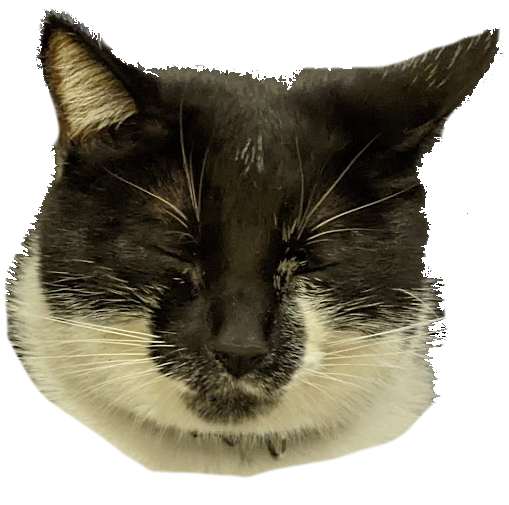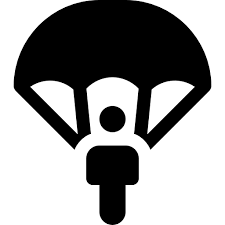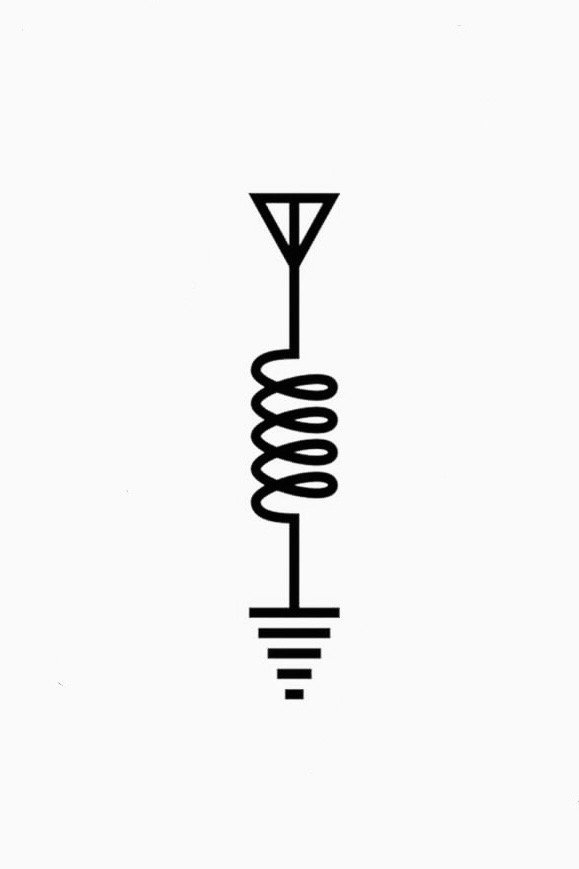I use a different phonetic alphabet:

Thanks I hate it
We need the real, dirty version. Not the one you use for mom.
Asshole Ballsack Cumdump Dickwad Ejaculate Fuckface Gooner Hand-job Incest Jizz Knob-gobbler Lube MILF Nipples Orgy Pussy Queef Rim-job Shithead Titfuck Urethra Vagina Wanker X-rated Yiff Zoo-porn
yuno Z?
Oh crap, missed one lol, I would go with “Zoo Open”
Y is also missing. 😬
Typing on the phone is hard especially when switching to browser to look for some nasty stuff lol.
How about we go with Yiff. Although it might be lost in the comms.
I’m going with Zucchini because it is the best in context of a WTF outlier, especially when said with a straight face
yuck. I will bully you off my line.
I bet you spend a lot of money.
These guides always misspell Alfa
Alpha is confusing for not native English speakers, so it’s supposed to be spelt with an F.
At least they got Juliett correct. It’s two T’s to keep French speakers from mispronouncing it.
I mean as a french speaker I would have also added a e, so Juliette
But then I guess for everyone else it becomes Juliett/e/ or Juliettè
Non intellego. Romanus antiquus sum et alpha perfectum sensum mihi facit
Ad astra per ass.
personally, I’ve always preferred this version:

A radio show I listened to years ago did a competition each day to update each letter of the phonetic alphabet. I don’t remember most of them, but they decided that T should be “Technotechnotechno” and that always amused me.
Fingler, Umm?, Chunky, Kristen Stewart is not a great actress.

I always thought we should add the Hot Shots! callsigns
“Copy that, Purple Fluffer Nutter.”
“Roger that, Milli Vanilli Chilly Willy.”
fingler
I appreciate the Archer reference
M as in Mancy. You would know!
The “calls with your mom or diffusing a bomb”…that whole section seems weird.
Wait is this whole thing somehow an Archer reference
S1, E7: Skytanic
It’s the first episode with Ray I think. Check it out on Netflix or wherever you dig up your internet video booty arr
Haha, didn’t catch that it was “diffusing” you know I guess a pretty efficient way to do that would be to detonate it.
I’ve always enjoyed playing with folks who actually know this by giving them intentionally misleading cues. Instead of “E as in Echo”, say “G as in Gecko”. That sort of thing. Cuneiform, Frisky, Mango, Oubliette, Zima…
Now I want all 26 done this way… D as in django would probably be the best though.
P as in pterodactyl
O as in oiseau
You can also just mess with them like:
- M as in Mnemonic
- N as in Ne
- O as in Opossum
- P as in Pneumonia
There was a very large number of people who seem to want to write C for Sierra and it’s really concerning.
Not only does it mean they’ve never heard of Sierra Leone which shows a distinct lack of geopolitical knowledge, but they’ve also never heard of Sierra software which shows that they’re not worth talking to.
Also that they thought that the phonetic alphabet, created for making it less ambiguous to describe English letters verbally, would decide to use one of the exception cases to the pronunciation of the letter C where it takes on the identical sound to the letter S, to help avoid confusion.
I’m sure a lot of people don’t know about the phonetic alphabet and just think I’m coming up with equivalents on the fly.
I once had an engineer go “G as in, …er… Oh Geee?”, which I suppose worked, sort of.
Or Sierra Trading Post, the best place to get your outdoor gear.
For something so commonly used, it’s got some pretty glaring flaws. Most critically, ‘golf’ and ‘mike’ - single syllable, which over radio comms often doesn’t sound like shit. Compare to something like ‘oscar’, which even if either half of it gets all staticky you still hear “osc–” or “–car” which is enough to still receive an accurate exchange of info.
My more whiny complaints are that the number of syllables are inconsistent, F and X use compound words instead of one single complete word which feels… icky… x gets a pass cuz x is always janky and x-ray is perfect. Some of the entries rhyme with commonly used words that could confuse someone who’s either inexperienced or in a stressful situation like being shot at. For example, “echo” could be misheard as “gecko” and even though “gecko” isn’t on the list, our brains do stupid shit when they’re saturated with adrenaline, so something like this should be as absolutely idiot-proof as possible.
If I could magic that fucker into something new, I’d shoot for:
-
every entry is exactly three syllables.
-
no two of the same syllables in any entry can rhyme with those two syllables of another entry. I.E., “Uniform” and “Chloroform” are not compatible because syllables 2 and 3 are too similar.
-
Each entry should be as common a word as possible, in as low/unspecialized a reading level as possible. I.E., “November” is recognizable by nearly everyone; vs something like “Ganglia” which is gibberish to anyone without specialty knowledge requiring them to be familiar with ganglia.
-
No compound or multiple word entries.
-
X gets a pass cuz x is always janky and x-ray is perfect.
-
Prototype phonetic alphabet must be first scrutinized by a panel consisting of a linguist, a speech pathologist, an English teacher, a 7 year old, a highschooler, a geriatric with severe hearing loss, and a junior enlisted US Marine. Their job is to find any potential for confusion.
Having a 7 year old and a junior enlisted US Marine seems redundant
I mean… someone has to supervise the Marine…
That’s fair. I’ve got enough marines in the family to know what happens when they’re left alone and get bored. Always best to have a more mature playmate with them.
I’ve got enough marines in the family to know what happens when they’re left alone and get bored.
The good crayons always go missing and there’s waxy buildup around their mouth.
Oh you’re so lucky their mouth is the only place your marines have stuck the crayons…
But with your new rules, x can be xylophone so you don’t need the special case rule for x anymore.
Ooh, good call!
In Amateur Radio, if our first calls are not received correctly, most experienced operators will switch up and use alternates for troublesome phonetics. America for Alpha, Germany for Golf, Kilowatt for Kilo. Some folks even use amusing ones. I once heard an American station using “Kentucky Fried Chicken” for their callsign ending in KFC.
I once heard an American station using “Kentucky Fried Chicken” for their callsign ending in KFC.
i mean that one is perfect
-
I remember someone screaming for a code down a phone line once and my mate started with the whole “G for gnome” , “P for pterodactyl” etc.
I laughed.
M like in Mancy
it seems hard unless you use it a lot and then it’s second nature. I’ve had to actually stop myself from using it in places like for a drive-thru pickup code, as that never goes well.
I was using this to read put a gift card code to make a purchase over the phone with apple (don’t ask why, it was a shit show), and when I gave Sierra, the person thought it was C as in Ciara. Had to repeat the whole thing over again.
Sierra’s even the name of one of their OS versions.
“Ciara”. smh
Hahahaha! I had forgotten about that!
one of my last jobs needed me to use this for reading inventory locations to a crane operator over a phone. he always seemed slightly bemused that I didn’t know the phonetic alphabet and had to make up my own phonetics for him
Tiajuana-Gringo-Water-Fiver-Zero
exactly. I KNOW that dude was clowning me as soon as I hung up the phone 😂
I can imagine the laughs at all the words you might have come up with. “It’s at uhh… Narwhal Sellotape Banana!”
A reminder though, to anyone who needs it - don’t be condescending to others for not knowing things. Everything we know, we had to learn.
For me, I learnt the phonetic alphabet after getting frustrated one too many times trying to give my postal code and car reg on a bad phone line.
As a Swedish IT technician, I use two phonetic alphabets.
The Swedish phonetic alphabet was created in the 1890s and first published in 1902, in the 1960s a few entries were changed to reduce the risk of confusion.
A - Adam
B - Bertil
C - Cesar
D - David
E - Erik
F - Filip
G - Gustav
H - Helge
I - Ivar
J - Johan
K - Kalle
L - Ludvig
M - Martin
N - Niklas
O - Olle (air traffic communications), Olof (military use)
P - Petter
Q - Qvintus
R - Rudolf
S - Sigurd
T - Tore
U - Urban
V - Viktor
W - Wilhelm
X - Xerxes
Y - Yngve
Z - Zäta
Å - Åke
Ä - Ärlig
Ö - ÖstenF as in Filip, then need G as in Geoffrey
Always been a bit annoyed that people describe Morse as a binary code, it isn’t, it’s technically trinary, you have 3 symbols, dot, dash, and space. Without a space you can’t discern the difference between “hi” and “eeeeee”.
I dunno that’s kind of like saying computer binary is trinary because there is a distinct separation of the bits
But there’s not a distinct separation of the bits
There is more than one width of space as well. And indeed, there are sometimes tones longer than a dash used as control codes.
But it’s a binary signal. It’s either on or off. All the symbols are described using a binary signal. There is a regular clock that divides the signal and each interval of the signal is read as on or off. A dah is three dits wide, most spaces are one or three dits wide, etc.
Morse code is transmitted as a binary code, but that doesn’t make Morse code binary. If that were the case the Latin alphabet would also count as binary because computers transmit it in binary. The rules you describe is the encoding between Morse code’s native trinary alphanumeric encoding into a binary format for transmission.
It is about like the difference between SPI and I2C serial communications.
I struggled with that one for a little while. My intuition of serial is more like SPI where there is a dedicated clock structure from a clock source that is separate from the data transmission. Or like with UART serial where the clock baud rate must be known or set in advance to establish communications.
However, with I2C serial it is only a 2 wire data interface, and the clock is built into the data. That is the main serial communications method used for most analog-world type sensors, like temperature, pressure, real time clocks chips, and many slow types of EEPROM persistent memory. SPI is used for small simple displays in embedded devices, and stuff like the flash memory chip that stores your bootloader on your computer. UART is most often the remote serial terminal access on stuff like your computer and router, though all of these com peripherals have exceptions in use cases.
The way I2C works is that the data line is always held in a high state with a weak pull up resistor. The devices attached to this data line use NPN transistors to pull the line low. Then the protocol establishes who gets to talk and when and how.
It’s ALFA https://www.nato.int/cps/en/natohq/declassified_136216.htm
Don’t ask me how I know. It’s annoying.
















